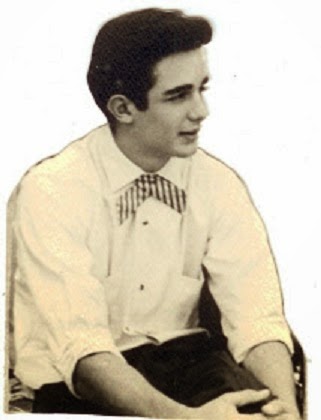By KiKi
The Olympic Auditorium: I belong to the Olympic Auditorium's Dying Breed Club: members that experience the Golden era of Los Angeles boxing.
My first time attending a boxing show at the Olympic Auditorium was in 1947. Some uncles of mine took me to see the rematch between Enrique Bolanos and John Thomas. They had fought earlier in the year. Their first fight, which I also attended, was at Wrigley Field, which was won by Bolanos by 7-round KO. Bolanos also won the second fight, this time by 4-round KO.
Within a couple of years, the Olympic Auditorium became my second home.
Among some of the fighters that I watched fight at the Olympic in those early years, besides Bolanos and Thomas, were: Art "Golden Boy" Aragon, Jimmy Carter, Freddie Babe Herman, Keeny Teran, Carlos Chavez, Harold "Baby Face" Jones, Lauro Salas, Phil Kim, Eddie Chavez, Gil Cadilli, and the Docusen brothers, Maxie and Bernard, and the list goes on and on.
In the mid-50s, I was training my cousin Tony Adame at the Teamsters Gym when he was fighting in the juniors. In 1958, he fought in the Junior Golden Gloves finals held at the Olympic, but he lost. That was the first time I worked a corner at the famed arena.
By the early '60s, I started to get to know the management and was on a first-name basis with some of them.
In the mid-'60s, the Olympic started holding public workouts on a Sunday a week or two before a big fight card. I would set up 2 or 3 sparring matches between junior fighters to warm the crowd up before the big guns would take the stage. Give the fans free workouts, sell them beer, and soon they would line up to buy tickets. I would get free tickets for my doings. I did that for several years.
By the early 1970s, I was fully embedded with the Olympic management. I became good friends with matchmaker Don Chargin. As hard as it was, I got to know Aileen Eaton, not well enough, though. I would take over for gloveman Norm Lockwood when he had to be out of town with a fighter or for other reasons.
In 1976, my oldest son Frankie turned pro and became a favorite of the house. Tony turned pro in 1979, and he, too, became a house favorite.
Around 1980, Rogelio Robles became the promoter after Aileen Eaton retired, and I became the amateur matchmaker for the pro/am cards. Now I was working closely with Don Chargin. The Olympic closed its doors for boxing around 1985. Some promoters tried to reopen it. Some held a show or two and then folded, including Oscar De La Hoyo.




